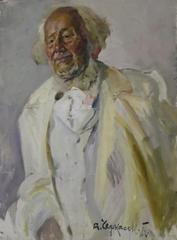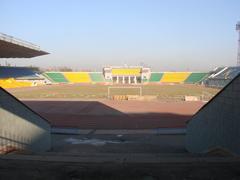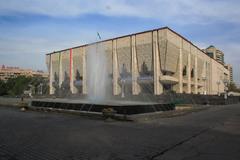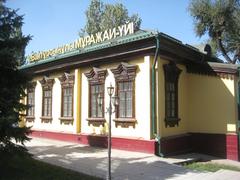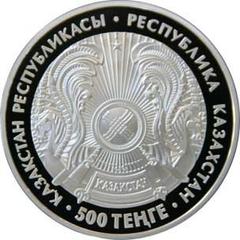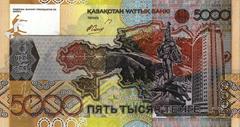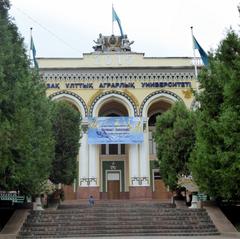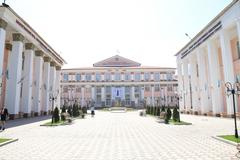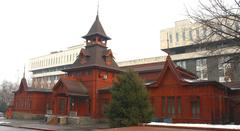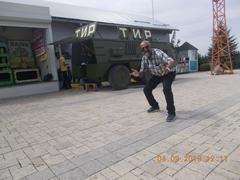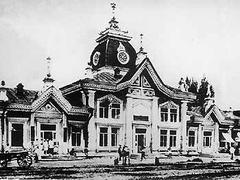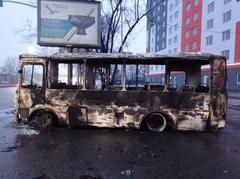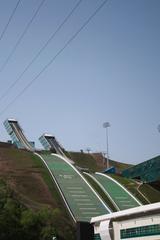Republican Book Museum Visiting Hours, Tickets, and Almaty Historical Sites Guide
Date: 04/07/2025
Introduction
Situated in Kazakhstan’s vibrant cultural capital, Almaty, the Republican Book Museum stands as a premier institution dedicated to preserving and celebrating the nation’s literary and intellectual heritage. Established in 1977 during a broader Soviet-era effort to reinforce national identity through culture, the museum offers an immersive exploration of Kazakh writing, publishing, and book history (OrexCA.com). Its extensive collections chart the journey from ancient oral traditions and handwritten manuscripts to early printed works and contemporary publications, spotlighting figures like Abai Qunanbaiuly and the evolution of Kazakh literature (IntechOpen). Housed in a historically significant 1935 building designed by Vladimir A. Tverdokhlebov, the museum also serves as an architectural landmark in Almaty, reflecting neoclassical Soviet influences (silkadv.com). With its educational programs, guided tours, and special exhibitions, the museum is an essential destination for anyone seeking to understand Kazakhstan’s cultural legacy. This guide provides detailed information on visiting hours, tickets, collections, and practical tips for exploring this and other historical sites in Almaty.
Table of Contents
- Introduction
- History and Significance
- Architectural Heritage
- Collections and Key Exhibits
- Visitor Information: Hours, Tickets, and Accessibility
- Guided Tours and Special Events
- Travel Tips and Nearby Attractions
- FAQs
- Conclusion
- References
History and Significance
Founding and Mission
The Republican Book Museum was established in 1977, with its doors opening in October 1978, as a result of Sh.R. E. Eleukenov’s initiative—then Chairman of the State Committee for Publishing and Printing of the Kazakh SSR (silkadv.com). Its founding mission was to chronicle the evolution of Kazakh writing and book production, and to serve as a repository of the nation’s intellectual and cultural achievements during a period of renewed emphasis on national identity.
Role in National Identity
Kazakhstan’s literary heritage—rooted in centuries-old oral traditions and later enriched by the adoption of Arabic, Cyrillic, and Latin scripts—has been instrumental in shaping national consciousness. The museum captures this transformation, documenting the shift from oral storytelling to written literature, and highlighting major literary figures such as Abai Qunanbaiuly (IntechOpen). Since independence in 1991, the museum has further contributed to cultural revitalization by showcasing both pre-Soviet and modern Kazakh literature, promoting intercultural understanding, and celebrating the country’s Silk Road legacy (globhistory.org).
Architectural Heritage
The Republican Book Museum occupies a two-story, L-shaped brick building at 94 Kabanbai Batyr Street, designed in 1935 by Vladimir A. Tverdokhlebov. Originally constructed for the Ministry of Social Security and later used by the Ministry of Grain Products and Feed Industry, the building features a neoclassical portico entrance and a horizontal relief panel by sculptor Ivan Vakhek depicting socialist agricultural life (silkadv.com). Recognized as a monument of local significance in 2010, the building is protected under municipal regulations, preserving its architectural and cultural importance for future generations.
Collections and Key Exhibits
Scope and Highlights
The museum’s collection includes over 20,000 items—rare books, manuscripts, periodicals, lithographs, booklets, emblems, and maps. Notable highlights include:
- Manuscripts from the 17th–19th centuries: Illuminated texts in Arabic, Persian, and Turkic, religious writings, and early handwritten books.
- Original publications by Kazakh literary icons: Works by Abai Qunanbaiuly and Shokan Valikhanov, and the personal library of Abish Zhirenchin, a noted Abai scholar (silkadv.com).
- Printing technology exhibits: Antique presses, typesetting tools, and lithographs illustrating the history of publishing in Kazakhstan.
- Soviet and post-independence literature: Textbooks, propaganda materials, and contemporary multi-volume works.
- Cross-cultural collections: Materials in Russian, European, and Central Asian languages that reflect the Silk Road’s intellectual and cultural exchanges.
Exhibition Halls
The museum’s six main halls are thematically arranged:
- Origins of Kazakh Writing: Early manuscripts and handwritten books.
- Printing History: Antique equipment and lithographs.
- Soviet Era Publishing: Literary works and propaganda from the 20th century.
- Notable Literary Figures: Rare works and archives of Kazakh writers.
- Rare Books and Manuscripts: Unique items from across Eurasia.
- Modern Literature and Art: Contemporary achievements in Kazakh literary culture.
Interactive displays and maps further enrich the visitor experience.
Visitor Information: Hours, Tickets, and Accessibility
- Address: 94 Kabanbai Batyr Street, corner of D. Kunayev Street, Medeu district, Almaty
- Opening Hours: Tuesday–Sunday, 9:00 AM–6:00 PM (closed Mondays and national holidays)
- Lunch Break: 1:00 PM–2:00 PM
- Tickets: Adults 500 KZT; Students/Seniors 250 KZT; Children under 7 free
- Contact: +7 (727) 261‒20‒09, +7 (727) 261‒38‒21
- Accessibility: The museum is wheelchair accessible and offers assistance for visitors with disabilities.
- Photography: Permitted in designated areas; flash and tripods require prior approval.
Guided Tours and Special Events
- Guided Tours: Available in Kazakh, Russian, and English (advance booking recommended).
- Educational Programs: Workshops, lectures, and school visits support research and community engagement.
- Special Events: The museum hosts temporary exhibitions, literary readings, and workshops—check the official website or social media for current schedules.
Travel Tips and Nearby Attractions
- Getting There: Centrally located and accessible by public transport, taxi, or on foot; parking is available nearby.
- Nearby Historical Sites: Central State Museum of Kazakhstan, Medeu Skating Rink, State Museum of National Musical Instruments, Panfilov Park, and Ascension Cathedral are all within easy reach.
- Visit Duration: Allocate at least 2–3 hours to fully explore the exhibits.
- Facilities: Rest areas available; check in advance for special accessibility needs.
FAQs
Q: What are the Republican Book Museum’s visiting hours?
A: Open Tuesday–Sunday, 9:00 AM–6:00 PM (closed Mondays; lunch break 1:00–2:00 PM).
Q: How much are the tickets?
A: Adults 500 KZT; students/seniors 250 KZT; children under 7 free.
Q: Are guided tours available?
A: Yes, in Kazakh, Russian, and English by appointment.
Q: Is the museum wheelchair accessible?
A: Yes, with facilities for visitors with disabilities.
Q: Can I take photographs inside the museum?
A: Yes, in designated areas; flash and tripods require permission.
Conclusion
The Republican Book Museum is a cornerstone of Kazakhstan’s literary and cultural landscape. Its comprehensive collections, educational initiatives, and architecturally significant home make it a must-visit for anyone interested in Kazakh history, literature, or culture. Conveniently located near other prominent Almaty historical sites, the museum provides a window into Kazakhstan’s enduring written legacy. Plan your visit today to experience this remarkable institution and deepen your appreciation for the nation’s cultural identity.
For updates on visiting hours, tickets, and upcoming events, visit silkadv.com. To explore more of Almaty’s historical and cultural attractions, browse our related articles or download the Audiala app for the latest museum news and guided tours.
References
- Republican Book Museum in Almaty: A Must-Visit Historical Site for Literature and Culture Enthusiasts, 2025, OrexCA.com
- Republican Book Museum Almaty: Visiting Hours, Tickets, and Exploring One of Almaty’s Historic Sites, 2025, Silkadv.com
- Historical and cultural insights on Kazakh literature and publishing, 2025, IntechOpen
- Notable Kazakh literary works and cultural contributions, 2025, Globhistory.org
- The Republican Book Museum’s role in cultural preservation and community engagement, 2025, Visitalmaty.kz
